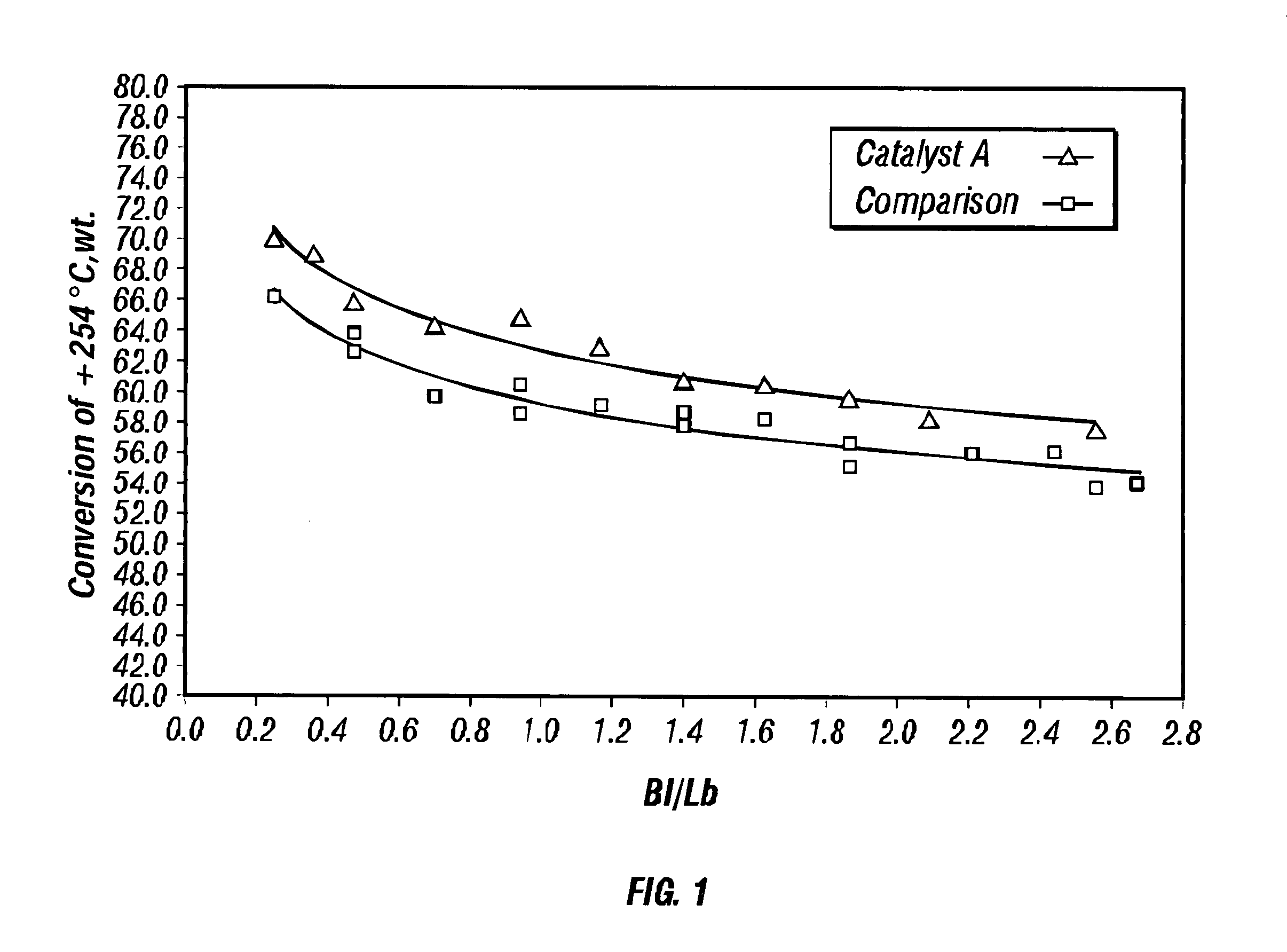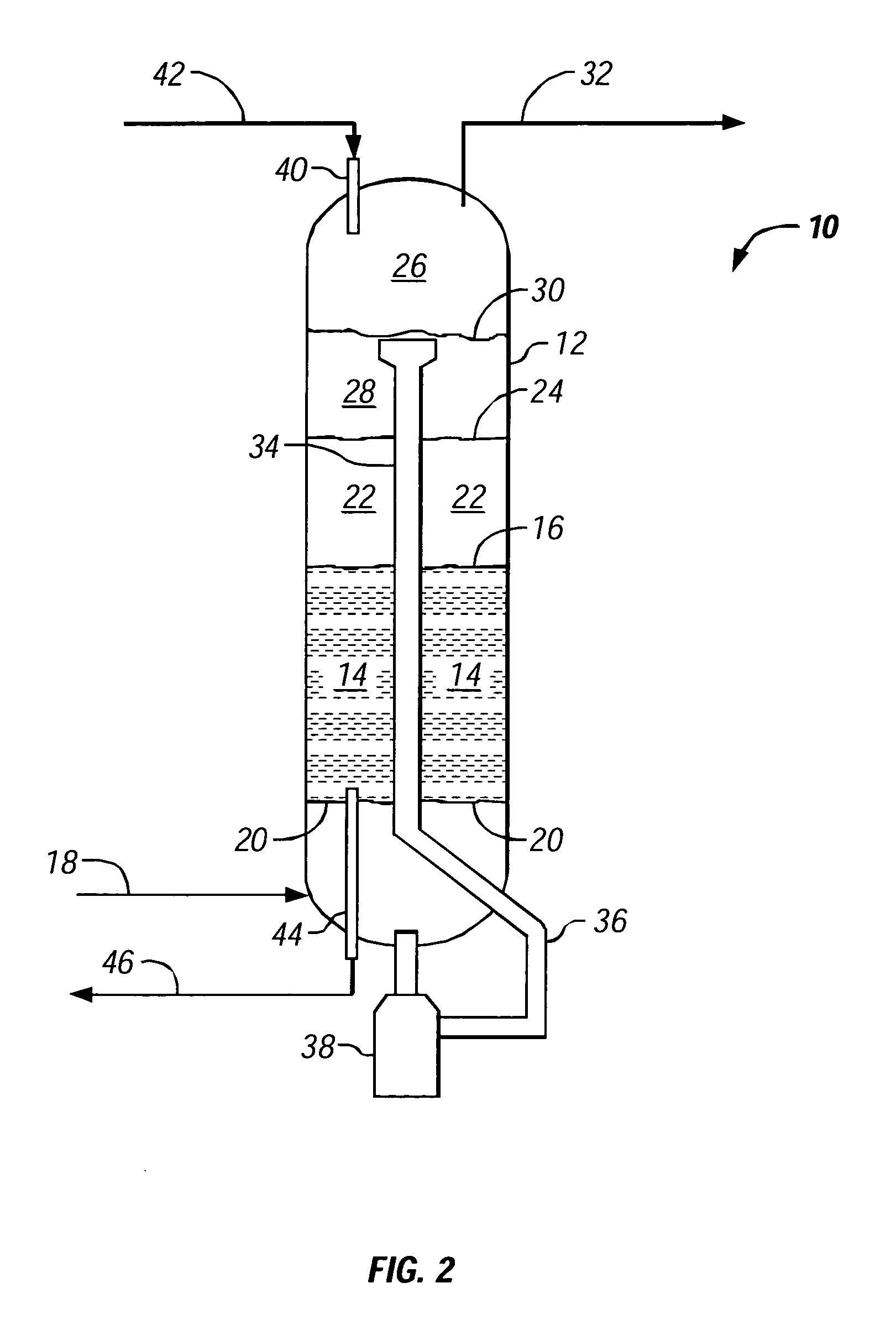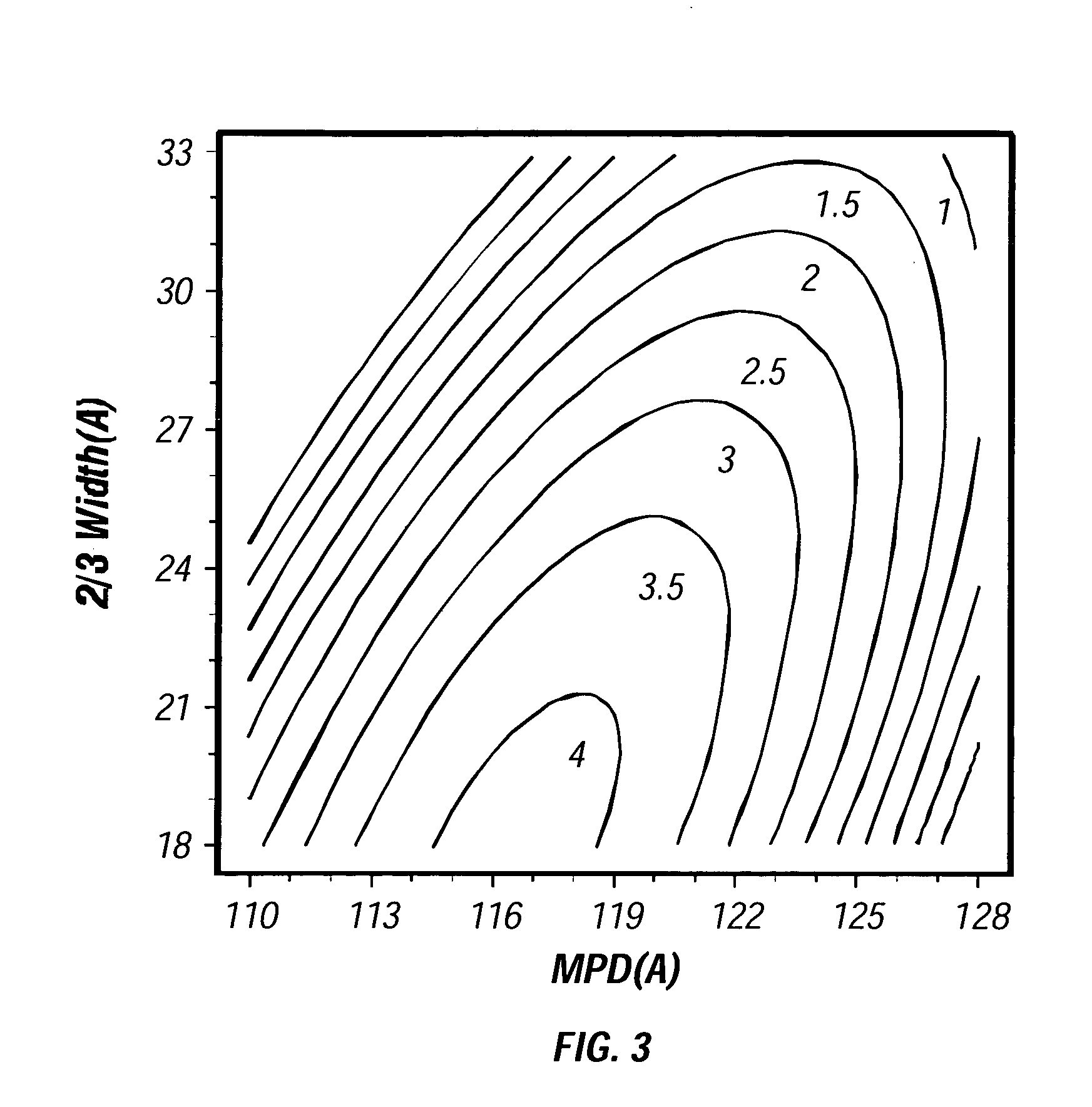Process and catalyst for the hydroconversion of a heavy hydrocarbon feedstock
a technology of hydroconversion and heavy hydrocarbon feedstock, which is applied in the direction of catalyst activation/preparation, physical/chemical process catalysts, metal/metal-oxide/metal-hydroxide catalysts, etc., can solve the problem of heavy hydrocarbon feedstock hydrotreatment that is particularly difficult, requires the use of more severe process conditions, and accelerates the decline of catalytic activity
- Summary
- Abstract
- Description
- Claims
- Application Information
AI Technical Summary
Problems solved by technology
Method used
Image
Examples
example 1
[0082] This Example 1 describes, generally, the laboratory preparation of the aluminum powder used to make the catalyst substrates that were used as the alumina support material in the preparation of the hydroconversion catalyst of the invention. This Example also presents the specific preparation conditions under which the alumina powders A, B, C, D and E were prepared using the generally described preparation procedure.
[0083] The alumina used for the catalyst substrate was made by a two-step precipitation process. The first step includes forming a first aqueous slurry of alumina by mixing a first aqueous alkaline solution of sodium aluminate with a first aqueous acidic solution of aluminum sulfate. The first aqueous alkaline solution and the first aqueous acidic solution were mixed in such amounts as to provide the first aqueous slurry that has a first pH and which contained a first amount of alumina (precipitate) as a percent of the total alumina made by the two-step precipitati...
example 2
[0086] This Example 2 describes the general laboratory procedure for the preparation of the catalyst substrates (i.e., alumina-containing extrudates) that were used in the preparation of the hydroconversion catalysts of the invention. Also presented are the specific preparation conditions under which the extrudates A, B, C, D and E were prepared using the generally described procedure.
[0087] Each of the alumina powder materials described in Example 1 were mixed with water and a dilute nitric acid to form a suitable extrudable paste. The extrudable paste was formed into cylindrical extrudates having a nominal diameter of 0.8 mm. The extrudates were dried at a drying temperature followed by calcination at a calcination temperature. Table 2 presents the preparation conditions for each of the extrudates along with the % loss on ignition (% LOI) values. The extrudate Samples A through E respectively were derived from corresponding alumina powder Samples A through E.
TABLE 2Conditions U...
example 3
[0088] This Example 3 presents certain of the important physical properties of each of the extrudate samples of Example 2 and of a comparison catalyst that is a commercially available hydroprocessing catalyst.
TABLE 3Physical Properties of Extrudates A Through E and ComparisonPhysical Properties of ExtrudatesMercuryMedianPoreSurfacePorePore SizeVolumeAreaDiameterDistributionExtrudate Sample(cc / g)(m2 / g)(Å)Width (Å)Comp. Catalyst0.8425512236A0.7822711918B0.8925111922C0.8522412726D0.8422112720E0.8123510820
PUM
| Property | Measurement | Unit |
|---|---|---|
| pore size distribution width | aaaaa | aaaaa |
| pore size distribution width | aaaaa | aaaaa |
| temperature | aaaaa | aaaaa |
Abstract
Description
Claims
Application Information
 Login to View More
Login to View More - R&D
- Intellectual Property
- Life Sciences
- Materials
- Tech Scout
- Unparalleled Data Quality
- Higher Quality Content
- 60% Fewer Hallucinations
Browse by: Latest US Patents, China's latest patents, Technical Efficacy Thesaurus, Application Domain, Technology Topic, Popular Technical Reports.
© 2025 PatSnap. All rights reserved.Legal|Privacy policy|Modern Slavery Act Transparency Statement|Sitemap|About US| Contact US: help@patsnap.com



